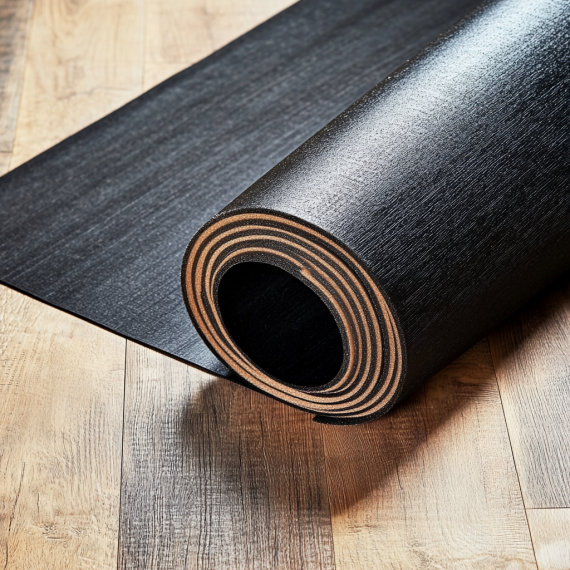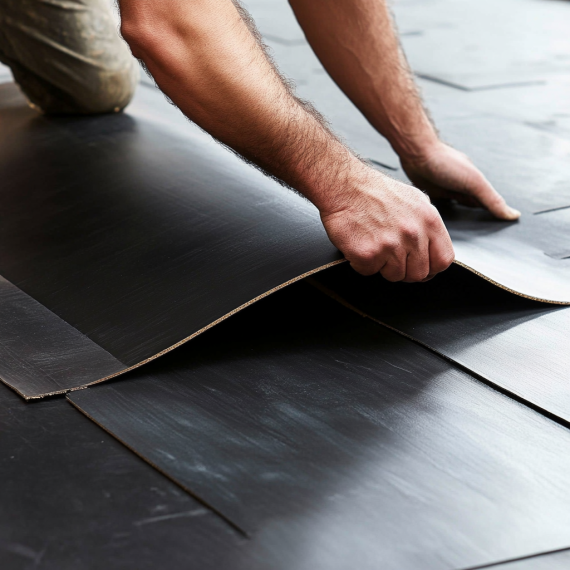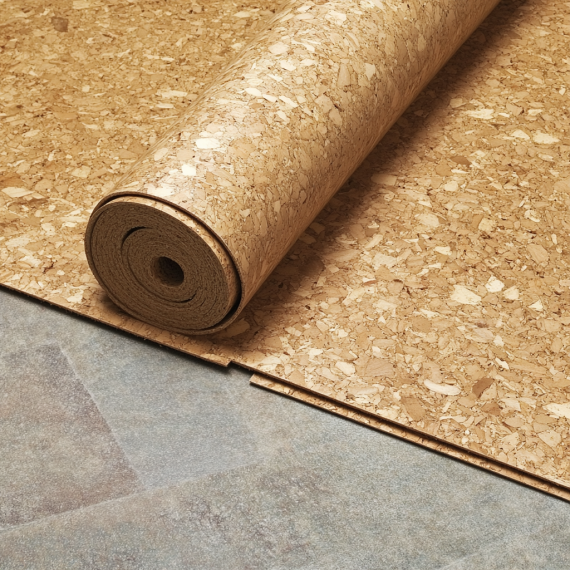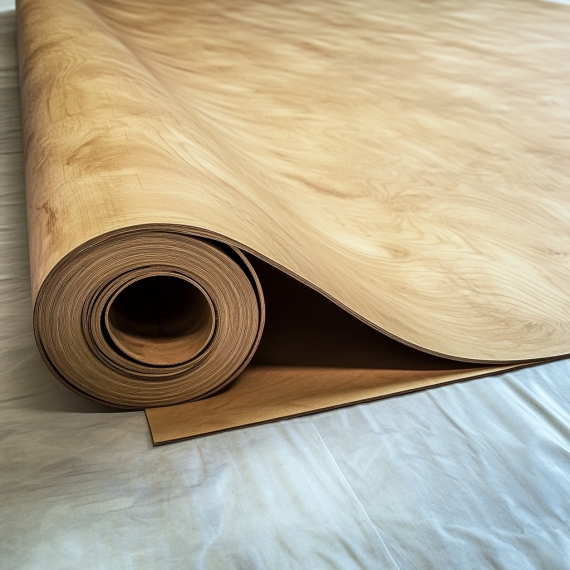NEWS TAG
brand
Top 5 Best Underlayments for Vinyl Flooring & How To Install
Vinyl flooring is a popular choice for home and commercial rooms due to its durability and aesthetic appeal. However, to ensure it performs at its best, selecting the right underlayment is important. Here’s our professional guide on the top underlayment types for vinyl floors and how to install them.
What is Underlayment & Why Do You Need For Vinyl Flooring?
Underlayment is a layer of material placed between the subfloor and the flooring that serves multiple functions:
Moisture Control: Prevents water and mold from forming under the flooring.
Sound Reduction: Minimizes noise for a quieter environment.
Thermal Insulation: Keeps the floor warm, particularly in colder climates.
Compensation for Subfloor Imperfections: Helps to create a smooth surface for flooring installation.

Top 5 Best Vinyl Flooring Underlayments & How To Install
So choosing the right underlayment for your vinyl flooring can enhance performance, comfort, and longevity. Here’s we get a detailed look at the top underlayments and how to install them:
1. Foam Underlayment
Foam underlayment is a versatile and cost-effective choice for vinyl flooring. It offers cushioning, sound reduction, and often includes a moisture barrier, making it suitable for areas with moderate foot traffic. With a lightweight design, foam is easy to install and trim, ensuring a seamless fit in any room. Its insulating properties can also help maintain a comfortable floor temperature.
Cost: Typically ranges from $0.22 to $0.30 per square foot.

How To Install:
Prepare Subfloor: Ensure it is clean and free of debris.
Roll Out Underlayment: Start in a corner and roll it out flat.
Cut to Fit: Use a utility knife to trim excess material.
Tape Seams: Use underlayment tape to seal the seams, creating a moisture barrier.
Lay Vinyl Flooring: Proceed to install the vinyl planks directly on top.
2. Felt Underlayment
Felt underlayment is known for its superior sound insulation, making it ideal for homes where noise reduction is a priority. It provides a thicker barrier compared to foam, offering better thermal insulation and a softer underfoot feel. Felt is also environmentally friendly, often made from recycled materials, and can help mask minor subfloor imperfections.
Cost: Generally priced around $0.50 to $0.75 per square foot.

How To Install:
Inspect Subfloor: Ensure it’s smooth and level.
Lay Out the Felt: Unroll the felt across the floor.
Cut and Adjust: Trim as necessary to fit the space.
Secure Seams: Use tape to secure the seams and create a continuous surface.
Install Flooring: Lay the vinyl flooring on top, ensuring it’s even.
3. Rubber Underlayment
Rubber underlayment is an excellent choice for sound insulation and moisture protection. It’s durable and resilient, capable of withstanding heavy use in high-traffic areas. Rubber is particularly suitable for basements or spaces prone to moisture as it acts as an effective water barrier. Its density also provides a stable base, preventing vinyl planks from shifting.
Cost: Costs approximately $1.15 to $1.50 per square foot.

How To Install:
Clean Subfloor: Make sure it’s free from dust and dirt.
Position Rubber Sheets: Place the rubber underlayment on the floor.
Trim Edges: Cut any excess material for a perfect fit.
Seal Seams: Use adhesive tape designed for rubber to seal the seams.
Place Vinyl: Install the vinyl planks over the rubber underlayment.
4. Cork Underlayment
Cork underlayment offers a sustainable option with excellent soundproofing qualities. It’s naturally resistant to mold and mildew, making it perfect for moisture-prone areas. Cork provides thermal insulation, keeping floors warm in colder climates. Its natural elasticity helps reduce stress on vinyl flooring, enhancing comfort and longevity.
Cost: Ranges from $0.85 to $1.20 per square foot.

How To Install:
Prepare Surface: Ensure the subfloor is level.
Lay Cork: Roll out cork underlayment across the area.
Cut to Size: Use a sharp knife to cut the cork to fit all corners and edges.
Join Seams: Secure seams with tape or adhesive.
Install Vinyl: Lay the vinyl flooring over the cork underlay.
5. Plywood Underlayment
Plywood underlayment provides a sturdy and level base for vinyl flooring. While it doesn’t offer much in terms of sound or thermal insulation, it’s ideal for ensuring a solid foundation. Plywood is particularly useful for correcting uneven subfloors, providing a reliable surface that enhances the durability and appearance of the vinyl planks.
Cost: Typically between $1.00 to $1.50 per square foot.

How To Install:
Check Subfloor: Make sure it’s clean and even.
Lay Plywood: Place plywood sheets over the subfloor.
Nail Down: Secure sheets with nails, ensuring they are flush with each other.
Sand Joints: Smooth out any uneven joints.
Install Vinyl: Lay vinyl planks on the prepared plywood surface.
Choosing the right underlayment for your vinyl flooring depends on your specific needs, such as moisture control, sound insulation, and warmth. Proper installation is key to maximizing the benefits of your chosen underlayment. Always follow manufacturer guidelines to avoid voiding warranties and ensure optimal flooring performance.
